Creating a Building Carbon Emission Performance Standard
Harvey Bryan, Ph.D., FAIA, FASES
Maria Grimm
School of Architecture and Landscape Architecture
College of Design
Arizona State University
PO Box 871905
Tempe, AZ 85287
Harvey.Bryan@asu.edu
Paper presented at the Solar 2009 Conference
Buffalo, NY., May 8-14, 2009
ABSTRACT
Carbon emission awareness is on the rise and there is a lack of tools and references available to help designers meet important carbon emission reduction benchmarks. This paper presents a building carbon emission performance standard and outlines the methodology that was used in its creation. This standard can be used to determine carbon benchmarks emission budgets in a specific climate zone for several building types. This standard offers an easy way to determine carbon without the need to run a detailed of a computer simulation model. Not only does this standard fall in line with recent carbon initiatives it is also a performance-based approach, something that is proving to be more effective than the traditional prescriptive-based approach to standards. This standard would help an individual aim for an improved carbon use intensity in new buildings and accurately gauge an existing building’s carbon emissions.
1. INTRODUCTION
Recent initiatives such as Kyoto Now(1), a movement prompting corporations to address their carbon emissions and The 2030 Challenge(2), which is asking the building community to achieve carbon neutrality by 2030, are finally beginning to tackle the reduction of carbon emissions. Cities nationwide are anxious to demonstrate their commitment to carbon reduction, as evidenced by the adoption of a resolution similar to the goals of The 2030 Challenge by the U.S. Conference of Mayors(3). Furthermore, the recent U.S. administration is currently planning to implement an economy-wide cap-and-trade system to reduce greenhouse gas emissions eighty percent by 2050(4). The development of a carbon emission performance standard has become important and timely.
The previously mentioned initiatives are aiming towards the eventual goal of carbon neutrality. Unfortunately, there is a lack of tools and standards to help designers determine if they are on the right track to achieving such a goal. A carbon emission performance standard will allow for a specific emission reduction to be targeted. Additionally, an emissions standard will provide a means of understanding how a building’s carbon emissions measure up to other buildings of the same type.
2. ENERGY STANDARDS
The nation’s first building energy standard was created as a response to the OPEC oil embargo more than thirty years ago. This standard, ASHRAE 90-1975, was quickly introduced to the building community as a first attempt at addressing energy concerns. ASHRAE-1975 was solely based on climate issues and did not address a building’s load profile. This was appropriate for skin dominated, residential scale buildings, but the standard was unsatisfactory for large scale commercial buildings that are internal load dominated. As a result, buildings were being built under-glazed and over insulated.
As the mistakes of this first standard were realized, it was argued that the next building energy standard should be performance based. The U.S. Department of Energy (DOE), contracting with organizations such as the then AIA Research Corporation, launched a four year and multimillion dollar research and development effort to produce a performance based standard. From this the Building Energy Performance Standard (BEPS)(5) was formulated. BEPS set an energy budget for 18 building types in 78 climate zones throughout the U.S. The units for these budget values are given in kBtu/ft2-year, known as the energy use intensity (EUI). Table 1 highlights the BEPS energy budget for a selection of U.S. cities. The budget values are in source units and have to be “weighted” according to fuel type to determine the site (or design) budget value. The site EUI can be determined by dividing the source EUI by the appropriate weighting factor set at 1.00 for natural gas, 1.20 for fuel oil, and 3.08 for electricity. Although the BEPS performance standard was ahead of its time, it was also controversial. Issues such as why source rather than site energy was used and how the weighting factors were determined were strongly questioned. Additionally, the BEPS calculation required an energy simulation at a time when most designers did not have access to a computer.
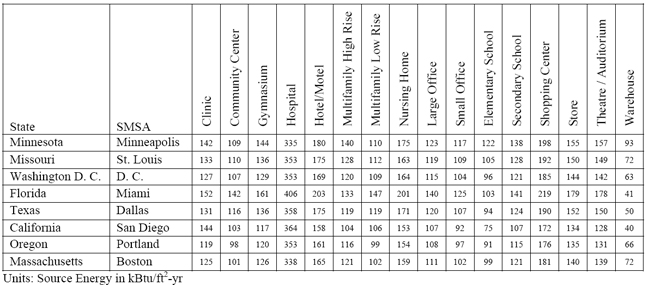
TABLE 1: A SELECTION FROM BEPS
Unfortunately, these issues never had the chance to be resolved as the incoming administration cut the DOE’s budget six-fold ($116 in 1980 to $20 million in 1982), eliminating the BEPS program and performance based standards for the next twenty years. In 1989, ASHRAE released a major revision to ASHRAE 90-1975: ASHRAE 90.1-1989. This standard solved the majority of the previous problems by splitting the standard into non-residential (90.1) and residential (90.2). ASHRAE 90.1-1989 included a prescriptive and a performance compliance path. However, the performance approach was rarely utilized until the 1990s when simulation programs were available on PCs. Since this revision, there have been three further revisions, the most recent being ASHRAE 90.1-2007. The 1999 revision introduced Energy Cost Budget (ECB) method, a pass/fail energy cost test, and Appendix G, an informational appendix to help a building to simulate energy performance beyond code.
2.1 Recent Activities
Currently, ASHRAE 189.1(6) is being developed for high performance green buildings. This standard addresses site, water efficiency, energy efficiency, materials and resources, and indoor environmental quality and mandates the use of renewables. ASHRAE 189.1 is attempting to establish energy efficiency 30% below the ASHRAE 90.1-2007. ASHRAE has made some important contributions in the realm of energy efficiency, however these standards can be extremely complex and time consuming and they do not easily facilitate the establishment of an energy budget. Furthermore, due to a growing concern about global warming and an elevated awareness of greenhouse gas emissions, the use of the EUI as a primary metric is being eclipsed for a more meaningful performance metric that places emphasis on the most dominant greenhouse gas: CO2. This is currently being done in Europe, the most notable being the U.K.’s L2A Standard(7). This standard requires all new buildings to model the building’s energy performance based on a set of prescriptive criteria and then multiply the fuel mix of the building by the CO2 emissions factor in order to determine a building’s target CO2 emissions. The process is repeated for the proposed building and if it is below the target, the building passes. Again, this is a time consuming process that requires the creation of two building energy models.
The standard presented in the following section also utilizes CO2 as a metric but offers a less complex performance based approach that can easily determine a CO2 emissions budget.
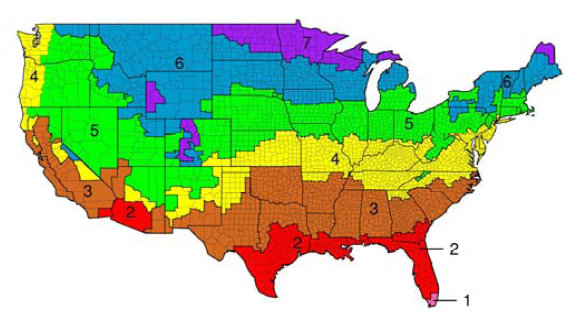
Figure 1: ASHRAE Climate Zones [8]
3. CREATING A CO2 EMISSION PERFORMANCE STANDARD
Similar to BEPS, this carbon emissions performance standard is based on climate zone and building type and
utilizes the 16 ASHRAE climate zones (Fig. 1). As it is performance based, it can easily be used to set CO2 benchmarks to help designers align buildings with The 2030 Challenge and other similar initiatives.
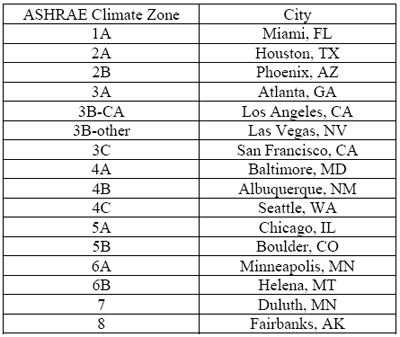
TABLE 2: CITIES REPRESENTING ASHRAE CLIMATE ZONES
3.1 Tools
This standard is generated from the Commercial Building Energy Consumption Survey (CBECS)(9) which is currently the most reliable building energy database available. CBECS is a national building survey conducted on the stock of U.S. commercial buildings. Starting in 1979, it is conducted every four years; the most recent (the eighth) was completed in 2003. In the 2003 survey, over 5,000 commercial buildings were selected to statistically represent the nation’s stock of more than 4.9 million commercial buildings (72 billion square ft).(10) The survey requests detailed data on the building’s operational characteristics, energy sources and consumption (both in energy and cost), energy intensive equipment, and any conservation or efficiency improvements that have been made. On May 4, 2007 several organizations (AIA, ASHRAE, Architecture 2030, IESNA and USGBC) finalized an agreement to set CBECS as the metric for establishing a common starting point and a goal of net zero energy buildings by 2030, further validating the decision to base this standard off of the CBECS database.
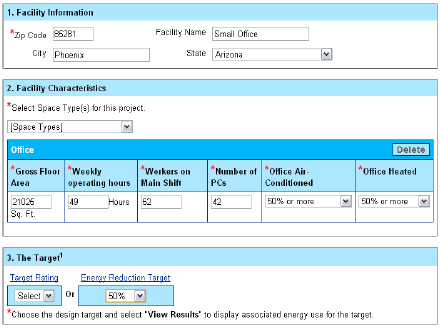
Figure 2: Target Finder building data input screen
Another tool used in the creation of this carbon emission performance standard is the Environmental Protection
Agency (EPA) Energy Star Target Finder(11). This is an easy to use web-based tool is designed to help set appropriate energy budgets for new buildings. Based on CBECS, Target Finder statistically normalizes CBECS to specific building use categories, climatic locations, occupancy and operational characteristics. After entering a minimal amount of building data, it instantaneously produces results such as energy performance rating (1-100), energy and carbon reduction percentage, source and site EUI, source and site total annual energy use, total for annual energy cost and annual carbon emissions and fuel mix. EPA awards an Energy Star label to any building that attains a performance rating of 75 and Target Finder has recently incorporated features that output results that meet the 2030 Challenge.
Finally, the building types used in this standard are based off of the National Renewable Energy Laboratory (NREL)(12) building definitions and defaults defined by Target Finder. Generally, the data from the NREL building definitions was entered first and then the defaults defined by Target Finder were used to fill in the requested data that was not specified in the NREL definitions. Most defaults given by Target Finder were listed by the square foot, so it could be accurately integrated with the NREL building data. Table 2 lists the cities used to represent the ASHRAE climate zones, also based off of the cities used in a separate NREL study.
3.2 Methodology
A small office building in ASHRAE climate zone 2B will be used as an example building to demonstrate the methodology used to create this building CO2 emission performance standard.
Target Finder is used to determine the building’s EUI and fuel mix. First, the building data is entered into Target
Finder (Fig. 2). Under “Facility Information,” a Phoenix zip code (85281) is entered because Phoenix is the representative city of ASHRAE climate zone 2B. Under “Facility Characteristics,” “office” is chosen as the space type. The gross floor area (21,025ft2) is taken from the NREL general building definitions. The weekly operating hours (49) and the number of workers on main shift (52) are derived from the occupancy schedules included in the NREL general building definitions. The number of PCs (42) and the percent air conditioned and heated (50) was determined by the defaults defined by Target Finder. For this standard, an energy reduction target of 50% was chosen as that is the current reduction called for by the 2030 Challenge. After all these values were input into Target Finder, the results can be calculated.
Target Finder found the EUI to be 29.3 kBtu/ft2-yr (Fig. 3). This process was repeated for all the building types and climate zones. Table 3 is a similar version of BEPS, updated to 2009. Finally, to find the target CO2 emission, the carbon use intensity (CUI) needs to be calculated. It is relatively easy to convert EUI to CUI; the EUI – broken down by fuel type – is multiplied by a conversion factor for that fuel type. Based on Energy Information Administration emission factors, the conversion factors used for this standard are 1.57 lbs-CO2/kWh for electricity is and 0.40 lbs-CO2/kWh for natural gas. Target Finder determined that the fuel mix is 92% electricity and 8% natural gas (Fig. 3).
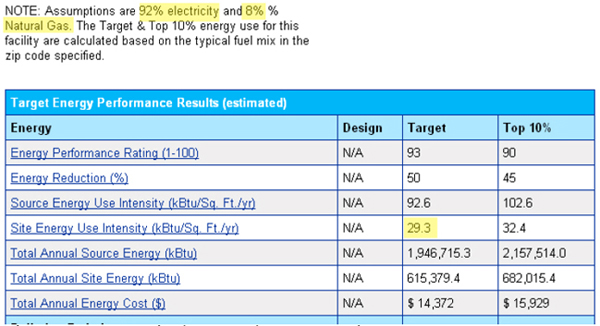
Figure 3: Target Finder Results Screenshot
The CUI is calculated for each fuel type as follows:

The CUI for this example is 12.68 lbs-CO2/ft2-yr. This is method is repeated for each building type in each climate zone to create a building carbon emission performance standard at a 50% reduction. Table 4 summarizes this standard.
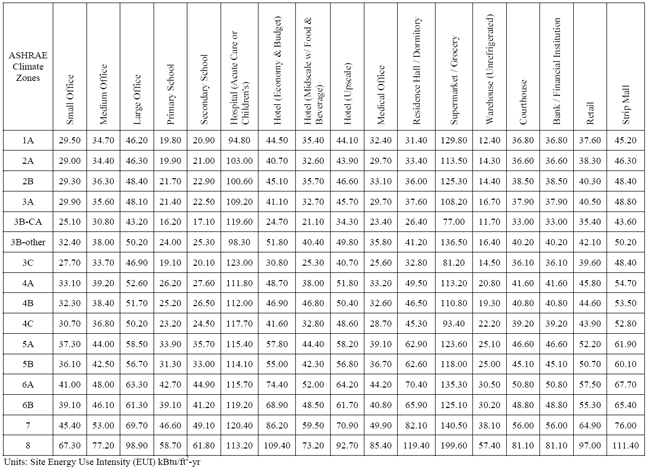
TABLE 3: TABLE 3: BUILDING ENERGY PERFORMANCE STANDARD 2009 – 50% REDUCTION FROM CBECS

TABLE 4: BUILDING CARBON EMISSIONS PERFORMANCE STANDARD 2009 – 50% REDUCTION FROM CBECS
4. CONCLUSION
The building carbon emission performance standard outlined above is a performance based standard that can
quickly provide a carbon emission benchmark in a specific climate zone for several building types. It is easy to use and a computer simulation is not needed to determine the carbon emission budget. Additionally, it is based off of real data and not a hypothetical baseline building. Because it uses CUI, not EUI, as a metric, the site energy versus source energy (an issue that was controversial with BEPS) is diminished because the energy is converted into the source CO2, allowing the environmental impact to be accounted for more vigorously.
Currently, there is a lack of tools to measure carbon emission performance but there are increasingly more incentives to decrease emissions. A carbon emissions performance standard similar to the one presented in this
paper will help reduce CUI and help designers meet the goals of the recent initiatives such as The 2030 Challenge. The building sector is being called upon to help fight climate change by achieving ambitious reduction targets for greenhouse gas emissions and this standard can be utilized help meet these important goals.
5. ACKNOWLEDGEMENTS
We would like to thank Jean Lupinacci and Karen Butler at the EPA for their help with Target Finder, Jim Wasley at the University of Wisconsin and his support for this work through the Carbon Neutral Design Project. Finally, we
would like to thank Ed Mazria for his tireless effort to make us all more aware about the impact of buildings on global warming.
5. REFERENCES
(1) http://www.rso.cornell.edu/kyotonow/index.html
(2) http://www.architecture2030.org/home.html
(3) http://www.usmayors.org/climateprotection/
(4) http://www.whitehouse.gov/agenda/energy_and_environment/
(5) Building Energy Performance Standard, Notice of Proposed Rulemaking, Federal Register. April 1980.
Washington, D.C.
(6) ASHRAE SPC 189.1, Standard for High-Performance Green Buildings Except Low-Rise Residential Buildings.
2008. ASHRAE, Atlanta, GA.
(7) http://www.planningportal.gov.uk/uploads/br/BR_PDF_ADL2A_2006.pdf
(8) http://resourcecenter.pnl.gov/cocoon/morf/ResourceCenter/graphic/973
(9) http://www.eia.doe.gov/emeu/cbecs/cbecs2003/detailed_tables_2003/detailed_tables_
2003.html#consumexpen03
(10) 2006 Building Energy Data Book. U.S. Department of Energy, Washington, D.C.
(11) http://www.energystar.gov/index.cfm?fuseaction=target_finder
(12) http://www.eere.energy.gov/buildings/highperformance/benchmark.html
(13) Bryan, H. 2008. Getting to Carbon Neutrality in Buildings. American Solar Energy Society National Solar
Conference 2008, May 5-8, San Diego, CA.
(14) Bryan, H., W. B. Trusty. 2008. Developing an Operational and Material CO2 Calculation Protocol for
Buildings. Sustainable Building 2008 Conference, September 21-25, Melbourne, Australia.
|

